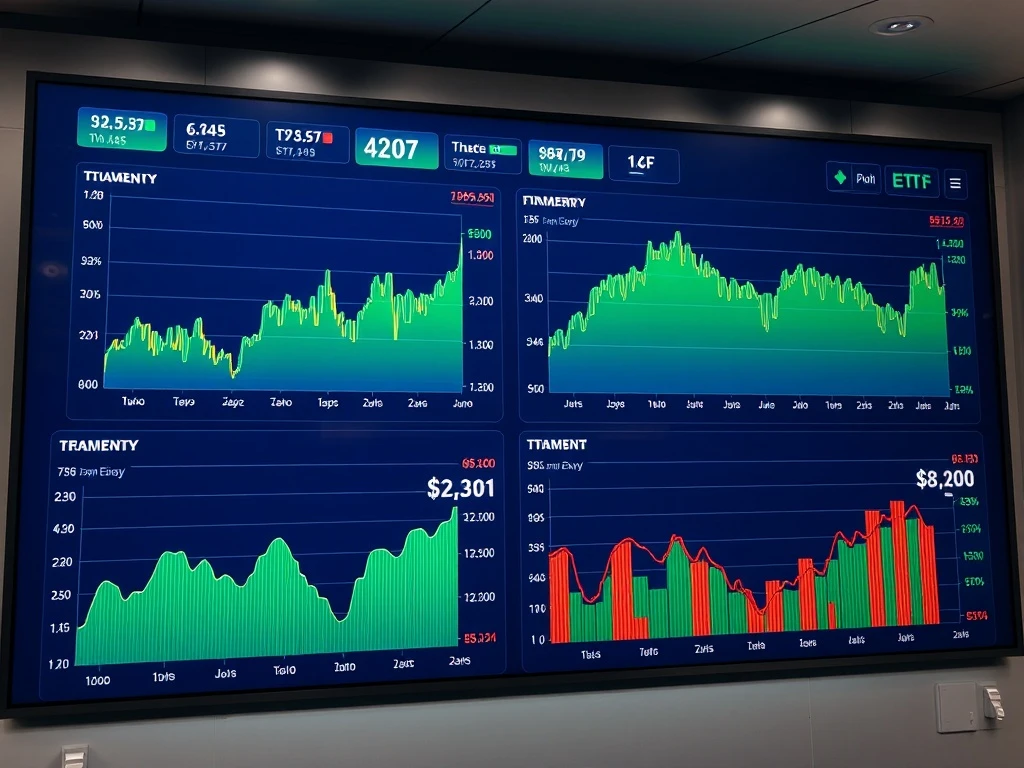Many investors currently worry about S&P 500 valuations reaching historical highs. Consequently, they seek smarter investment approaches. Fortunately, numerous ETF alternatives offer better value and diversification opportunities today.
Understanding the S&P 500 Valuation Concern
The S&P 500 index shows elevated price-to-earnings ratios currently. Many analysts express concern about stretched valuations. Therefore, investors explore ETF alternatives for better risk-adjusted returns. Market conditions favor diversified approaches now.
Top 5 ETF Alternatives for Today’s Market
Several compelling options exist beyond traditional index funds. These ETF alternatives provide unique advantages:
- Value-oriented ETFs target undervalued companies with strong fundamentals
- International market ETFs offer geographic diversification benefits
- Sector-specific ETFs focus on growing industries with better valuations
- Dividend-focused ETFs provide income during market uncertainty
- Small-cap ETFs capture growth potential in overlooked companies
Comparing Performance and Risk Profiles
Each ETF alternative carries distinct characteristics. Value ETFs typically show lower volatility. International ETFs offer currency diversification benefits. Sector ETFs require careful timing selection. Dividend ETFs provide consistent income streams. Small-cap ETFs demonstrate higher growth potential.
Implementation Strategies for Portfolio Diversification
Investors should consider gradual position building. Dollar-cost averaging reduces timing risks. Portfolio allocation depends on risk tolerance. Regular rebalancing maintains target exposures. Professional advice helps customize strategies appropriately.
Long-Term Outlook for Alternative ETFs
Market cycles favor different strategies over time. Diversification protects against concentration risks. ETF alternatives offer flexibility during market shifts. Historical data supports diversified approaches. Future market conditions may favor these strategies.
Frequently Asked Questions
What makes the S&P 500 expensive currently?
The index shows high price-to-earnings ratios compared to historical averages. Market concentration in few stocks also contributes to valuation concerns.
How do international ETFs compare to US markets?
International ETFs often trade at lower valuations. They provide geographic diversification and currency exposure benefits.
Are sector ETFs riskier than broad market funds?
Sector ETFs carry higher concentration risks. However, they offer targeted exposure to specific growth industries.
What percentage should alternative ETFs represent in a portfolio?
Allocation depends on individual risk tolerance. Most advisors recommend 20-40% for diversification purposes.
How often should I rebalance my ETF holdings?
Quarterly or annual rebalancing maintains target allocations. Significant market moves may require additional adjustments.
Do alternative ETFs have higher expense ratios?
Some specialized ETFs carry slightly higher fees. However, many alternatives maintain competitive expense ratios.








